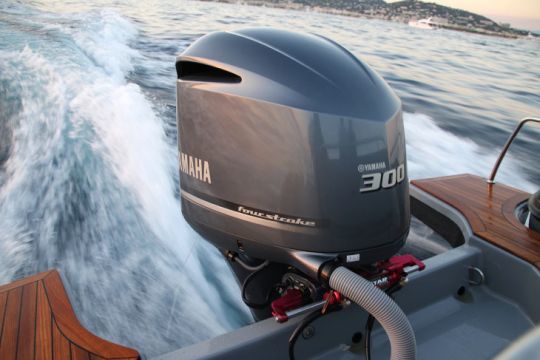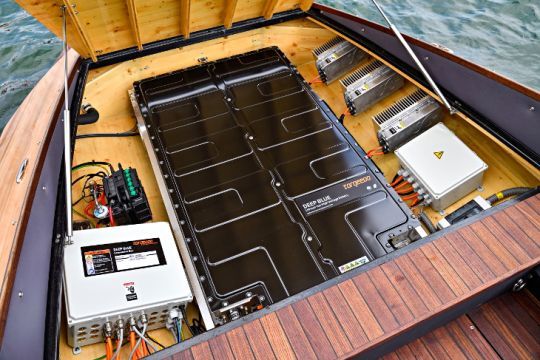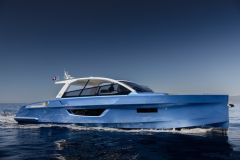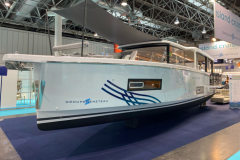A different calculation of fiscal power
Calculation of the annual tax on personal watercraft, or TAEMUP, which replaces the applicable yearly "droit de francisation", is based not only on the length of the boat, but also on its engine. To do this, you need to define an administrative power rating, according to formulas defined by Affaires Maritimes, which is now in charge of collecting this tax. The calculation is different for internal combustion engines and electric motors.
In the first case, the authorities base their decision on the engine's cubic capacity, using two formulas:
- For two- or four-stroke petrol or two-stroke diesel engines: Displacement (in liters) multiplied by 5.727
- For four-stroke diesel engines: Displacement (in liters) multiplied by 4.009
In the second case, the calculation is based on the power :
- For motors powered exclusively by electricity: kW divided by 5.14895

Higher taxes on electric motors
We wanted to compare boats with equivalent electric and internal combustion power to assess the applicable tax.
The first case of inboard motorization is based on a 51-foot catamaran, carrying two Yanmar inboard motors, each with 80 hp and 2 liters of displacement.
The thermal tax rating is therefore 2x2x4.009 = 16.036 rounded up to 16 HP.
The kilowatt equivalent of 80 hp is 58.8 kW. The tax rating for an identical electric motor would therefore be: 2x58.8 / 5.14895 = 22.839 rounded up to 22 HP.
In the first case, the 11 to 20 CV bracket is ?35 per CV over the 5th, and in the second, the 21 to 25 CV bracket is ?40 per CV over the 5th.
Electric catamarans are required to pay ?680 for the TAEMUP engine, compared with ?385 for internal combustion engines.

The same exercise for an outboard motorboat equipped with a 100 hp Suzuki, i.e. 73.6 kW with a displacement of 1.5 L, gives the following administrative power ratings: 8 hp internal combustion and 14 hp electric.
The motorization portion of the TAEMUP for this open hull would be ?42 for internal combustion and ?315 for electric.
A tax system out of step with announcements on decarbonization
The results of the calculations are surprising. Small electric motors, under 5 HP, are exempt from duty, but although high-power electric motors are still rare, they do exist on the market and are tending to develop. The power ratings mentioned in our calculations are already available.
When contacted, Affaires Maritimes, through the head of the tax department, replied as follows: "At present, this calculation could, in some cases, be unfavorable to electric motors, depending on the power concerned. However, few electric motors are taxed, as the market for high-powered vehicles is still relatively undeveloped, and almost exclusively concerns personal watercraft, which have their own tax threshold. In the future, it will be necessary to adapt this tax system to the reality of uses and the nautical market, with the aim of promoting the energy transition, an ambition set out in the roadmap for decarbonization of the maritime sector. The DGAMPA is currently examining this issue, which will require legislative, regulatory and fiscal arbitration."
Let's hope that this process will soon come to fruition. It should be noted that river transport, which is more concerned for the moment, has already announced a reduction in the vignette for electric units.











